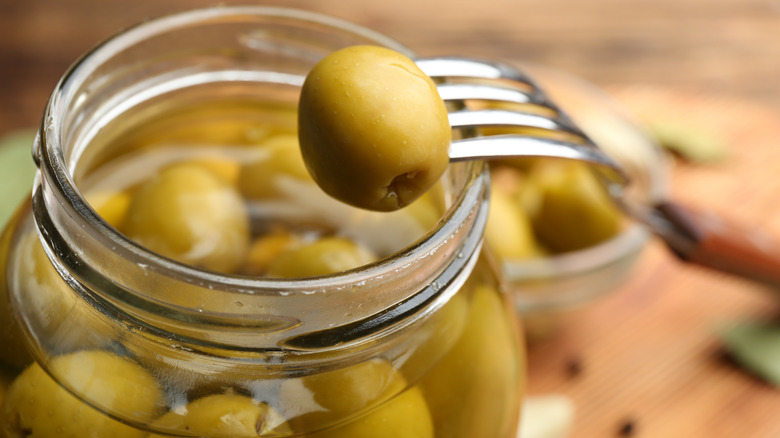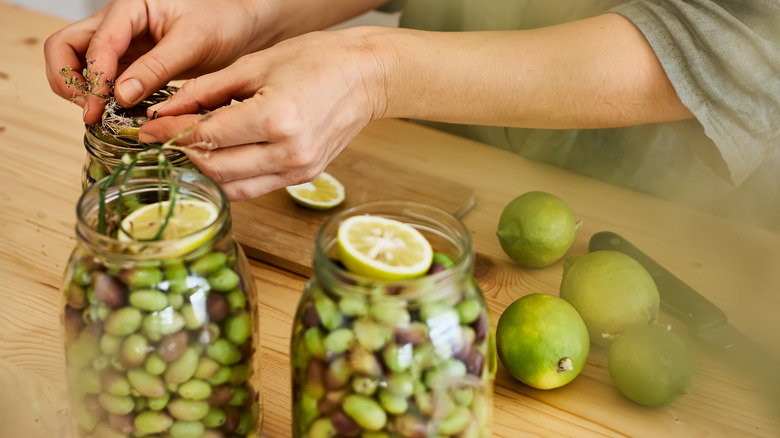How To Prevent The White Film From Forming In Your Jar Of Olives
If you've ever had an opened jar of olives, chances are that an unsightly white film developed at the top of the brine. While its slimy, ghastly appearance is reminiscent of mold, this white residue is actually quite harmless. In fact, it's natural and even beneficial to your gut health since it's a lactobacillus probiotic bacteria that forms in fermentation between the brine and oxygen, per Healthline. However, as we eat with our eyes as much as with our mouths, these light sediments may seem unappetizing.
If you don't care for an extra boost of probiotics or you really hate the sight of this floating layer, you could add some vinegar to the top of your olive jar. The addition of vinegar will ensure that the white film doesn't form again in your jar of olives and will save your olives from being coated in the film as well, especially if you're using them for garnishing or adding them whole to a martini.
Add vinegar or make a new brine to prevent a white film from forming
Now that you know that the white spots and deposits are harmless byproducts of oxidation, there's no need to toss your jar of olives. However, the important thing to know is that you can't add the vinegar at the top and expect the probiotic layer to dissolve — you first need to remove it from the jar entirely. You could scoop out the film with a spoon or even remove all of the brine and rinse off the white spots on your olives.
Once your olives are clear of the bacteria, you can return them to the jar and make your own brine. All it takes is making a new salt-water mix that hasn't undergone fermentation. This method would almost reset your olive fermentation process by refreshing its brine, meaning that it'll take a while before another white film forms.
But the easier method is to add a teaspoon of vinegar on top after removing the film. Since vinegar is highly acidic, it will halt the fermentation process and prevent this good bacteria from forming again. Using either method will ensure that your olives look fresh and smooth, ready to be served in just about any dish, like a gorgeous Greek-style seven-layer salad.

